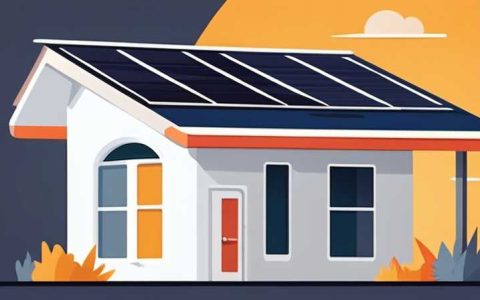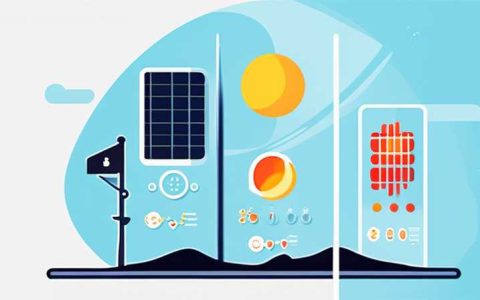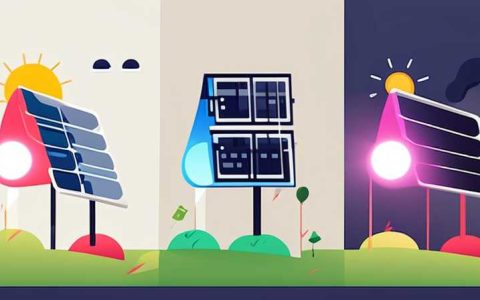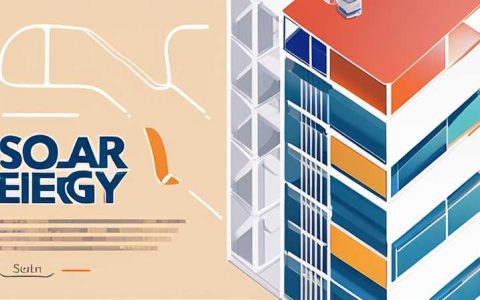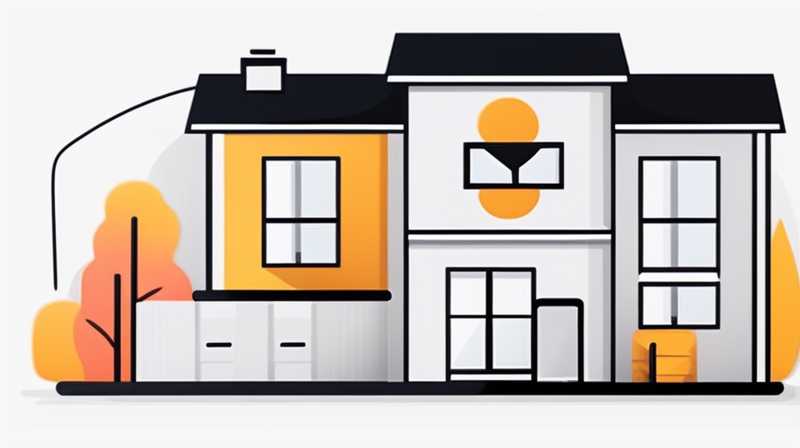
Investing in home solar panels can be a financially astute decision, with costs influenced by various factors. 1. On average, homeowners can expect to pay between $15,000 to $30,000 for a complete solar panel installation, depending on system size and geographic location. 2. Federal tax credits can significantly reduce these costs, allowing for potential savings of up to 26% until the end of 2022, though states may have their own incentives. 3. Maintenance and operational costs are relatively low, typically around $100 annually, while energy savings can reach around $1,000 per year, depending on usage and local energy rates. 4. Financing options vary, with loans, leases, and power purchase agreements (PPAs) available to suit different financial situations.
1. UNDERSTANDING SOLAR PANEL COSTS
The financial aspect of solar panel installation represents one of the most critical considerations for potential investors. While many envision solar power as a way to save money, the initial expenses can be daunting. The complexity of the pricing structure often confuses homeowners, making it vital to break down the costs into understandable categories. The major factors influencing the cost of installing a solar energy system include system size, panel efficiency, labor charges, geographical location, and additional equipment requirements.
The total expense for solar installation generally ranges between $15,000 to $30,000 before any tax credits or incentives. This substantial investment may dissuade homeowners from pursuing solar energy, but the long-term benefits often outweigh these initial hurdles. The upfront costs must be assessed in light of potential savings on energy bills, increased property value, and various incentives offered at federal and local levels.
2. VARIABLES INFLUENCING INSTALLATION EXPENSES
To grasp the complete cost of solar panel investment, it is essential to examine the specific variables that play crucial roles. Firstly, the size of the solar system is a primary determinant, as larger systems typically incur higher costs due to the number of panels needed. Homeowners must consider their average energy consumption and select a system that matches their usage, ensuring maximum efficiency.
Secondly, geographical location significantly impacts pricing, as regions with higher solar irradiance may provide greater energy production. Consequently, residents in sunny states like California or Arizona may find a faster return on investment, as their systems can generate more power. Furthermore, local regulatory factors and utility rates can affect the installation’s financial dynamics. Understanding these aspects is vital for selecting the right system that aligns with financial expectations.
3. INCENTIVES AND FINANCIAL POSSIBILITIES
Homeowners are often unaware of the variety of incentives available to help mitigate the costs associated with solar panel installation. The Federal Solar Investment Tax Credit (ITC) allows homeowners to claim a significant percentage of their solar energy system installation costs on their federal tax return. As of 2022, this percentage stands at 26%, but it is essential to stay informed about any changes in legislation that may affect this incentive moving forward.
In addition to federal incentives, various states and local governments offer their own programs that may include rebates, performance incentives, and property tax exemptions. As an illustration, states like New York and Massachusetts have their rebate systems designed to promote solar installation, thereby reducing overall costs concluded in the homeowner’s budget. Exploring local initiatives can ensure that investors maximize savings and make solar energy more financially accessible.
4. ESTIMATING LONG-TERM SAVINGS
Consideration of long-term savings is a critical viewpoint for anyone contemplating solar panel investment. One of the primary benefits of installing solar panels is the significant reduction in electricity bills. Homeowners can realistically save $1,000 per year or more, depending on energy consumption and regional energy rates. The savings become particularly evident in states with higher electricity costs, where switching to solar can provide substantial relief from escalating energy expenses.
Additionally, solar energy systems can increase property values, making homes more desirable in the real estate market. Studies have indicated that homes equipped with solar installations often command higher sale prices than comparable properties without solar energy systems. By evaluating this potential increase in property value alongside energy savings, homeowners can accurately calculate their return on investment and determine the financial viability of their solar investment.
5. FINANCING OPTIONS FOR SOLAR INSTALLATION
Homeowners frequently encounter the challenge of financing their solar panel installation, and fortunately, multiple options are available to facilitate this process. Loans, often secured through banks or credit unions, allow investors to borrow the global costs associated with system installation and then repay them over time. The advantage of such loans lies in the maintained ownership of the system while enjoying its direct energy savings.
Leases offer an alternative path for those hesitant to commit to full ownership immediately. Under leasing agreements, homeowners can enjoy the benefits of solar energy without upfront costs, simply making monthly payments to the solar company for using their panels. Lastly, Power Purchase Agreements (PPAs) allow homeowners to buy energy produced by the solar system at a predetermined rate, often lower than traditional utility rates. Understanding these financing models will enable potential investors to determine the most suitable method for entering solar energy.
FAQs
WHAT ARE THE MAIN COSTS ASSOCIATED WITH SOLAR PANEL INSTALLATION?
A variety of costs come into play during the installation process of solar panels. Initially, the price varies significantly based on system size, which reflects the output capacity required to meet the home’s energy needs. Additionally, installation charges determined by the labor market can drive up expenses, particularly in areas with high demand. The quality of equipment is another significant variable, with higher efficiency panels commanding better prices. Furthermore, maintenance and operational expenses, while generally low averaging around $100 annually, must be factored into the overall cost structure as well.
IS SOLAR POWER WORTH THE INVESTMENT?
Investing in solar panels can indeed be a sound decision, primarily rooted in long-term financial benefits. Homeowners can potentially save up to $1,000 annually on their electricity bills, and combined with tax incentives, the return on investment improves substantially. Moreover, the installation can increase property values, providing benefits even if the homeowner decides to sell. However, individual circumstances, such as local energy rates, solar access, and available financing options, will ultimately dictate whether solar power is a worthy investment for the homeowner.
HOW LONG DOES IT TAKE FOR SOLAR PANELS TO PAY FOR THEMSELVES?
The payback period for solar panel systems varies significantly based on a variety of factors. On average, homeowners can expect to recoup their investments within 6 to 10 years after installation. This timeframe is influenced by several variables, including local electricity rates, tax incentives, the total cost of installations, and system efficiency. Higher electricity rates and greater incentives facilitate a quicker return on investment, while systems that capture abundant sunlight will yield faster payback periods. Analyzing these factors carefully is essential for prospective solar panel investors to evaluate potential returns.
Investing in home solar panels represents a forward-thinking initiative, with dynamics warranting careful examination. The financial landscape of solar energy encompasses not only the upfront installation costs but also the long-term savings and incentives accessible to homeowners. The wide-ranging expenses – including equipment quality, installation charges, financing options, and geographical factors – must be meticulously scrutinized. As individuals assess the prospect of solar energy, a holistic evaluation of costs against future advantages becomes vital. Moreover, understanding financing avenues including loans, leases, and PPAs enables homeowners to navigate the financial intricacies of solar investments.
In summary, while the initial costs may seem substantial, the opportunity for low maintenance and operational expenses, alongside significant savings on energy bills and available incentives, creates a balanced equation that favors solar energy. Homeowners motivated by sustainability and energy independence will find ample justification for the decision to invest in solar power systems. The growing trend of solar panel installations is indicative of a larger movement toward renewable energy solutions, paving the way toward a more sustainable future. This mindset embodies not only environmental awareness but also a financially sound approach to navigating energy costs. The potential of solar energy to transform households and stabilize utility expenditures paints a promising picture for home energy solutions in the years to come.
Original article by NenPower, If reposted, please credit the source: https://nenpower.com/blog/how-much-does-it-cost-to-invest-in-home-solar-panels/

